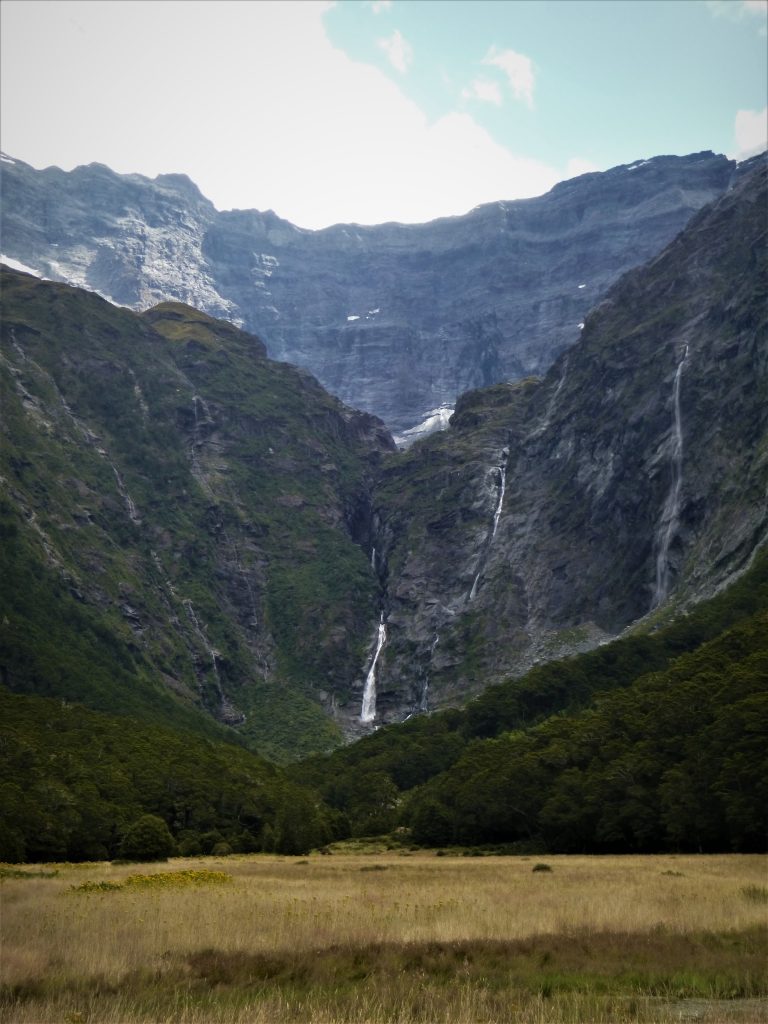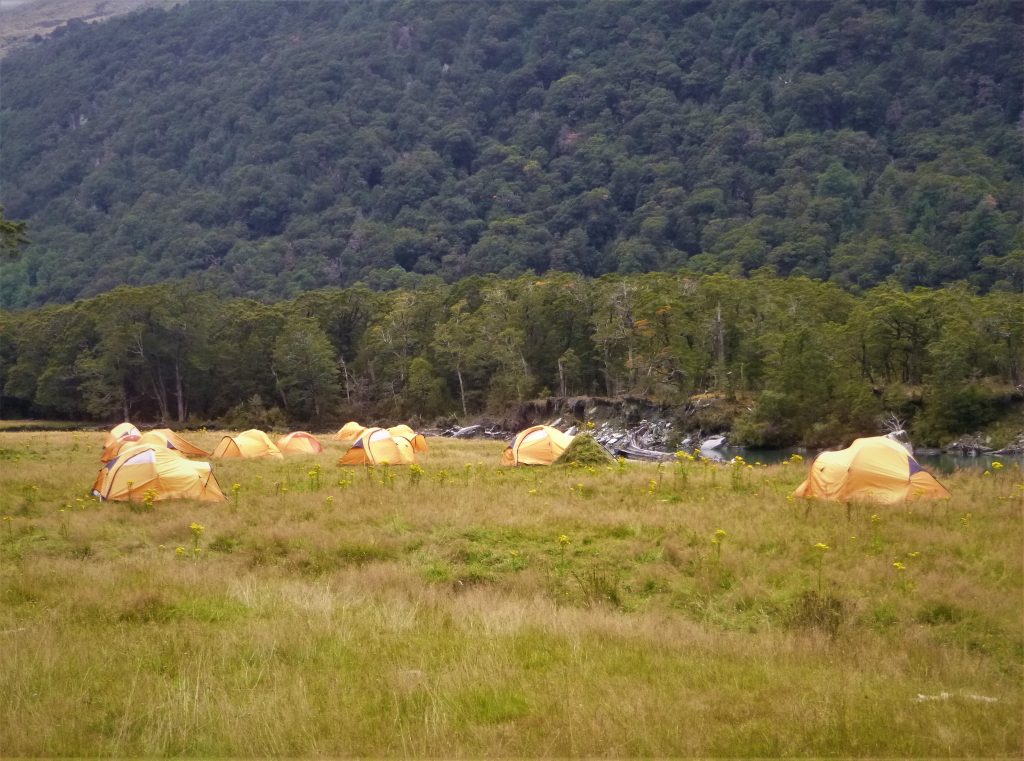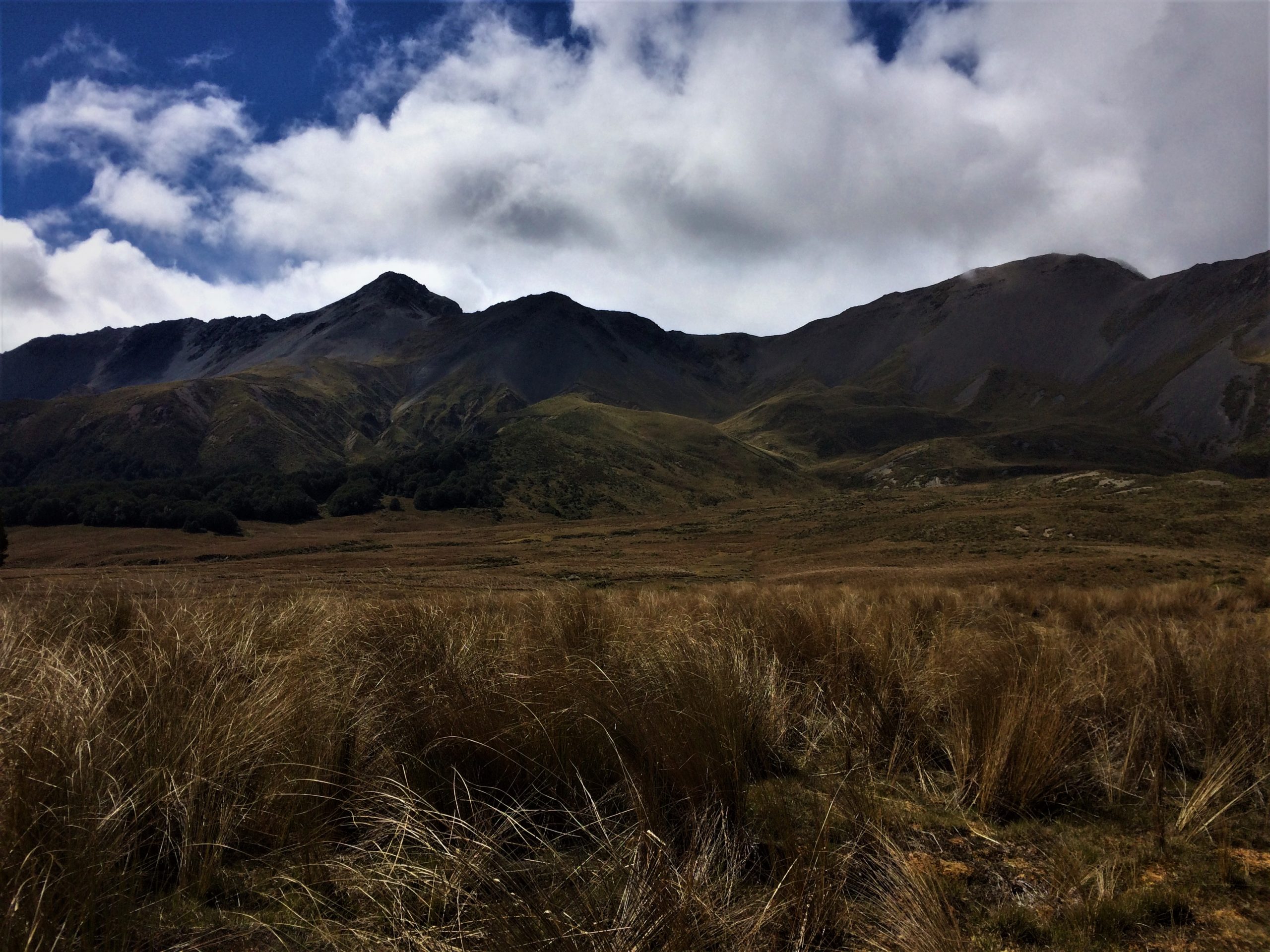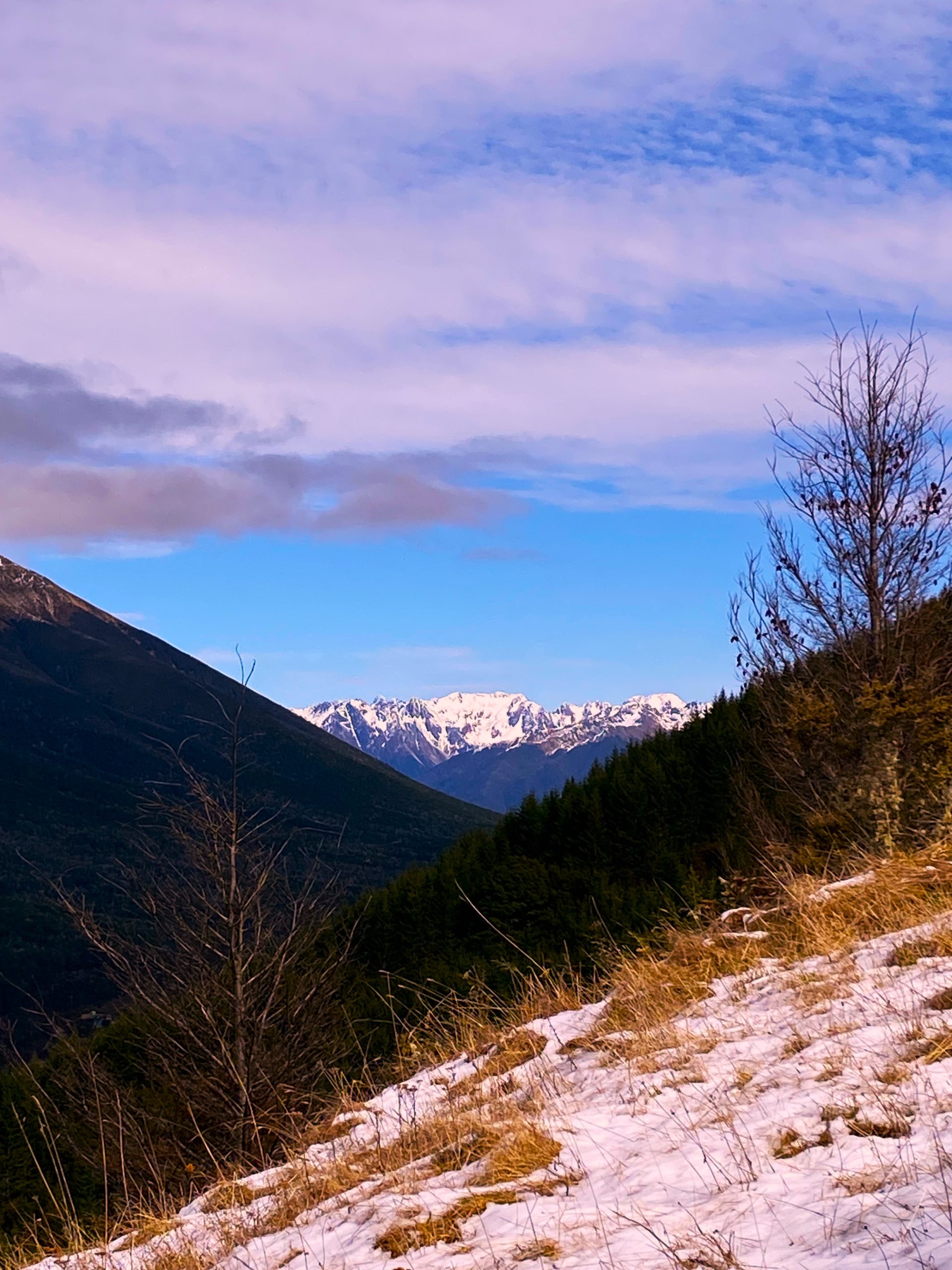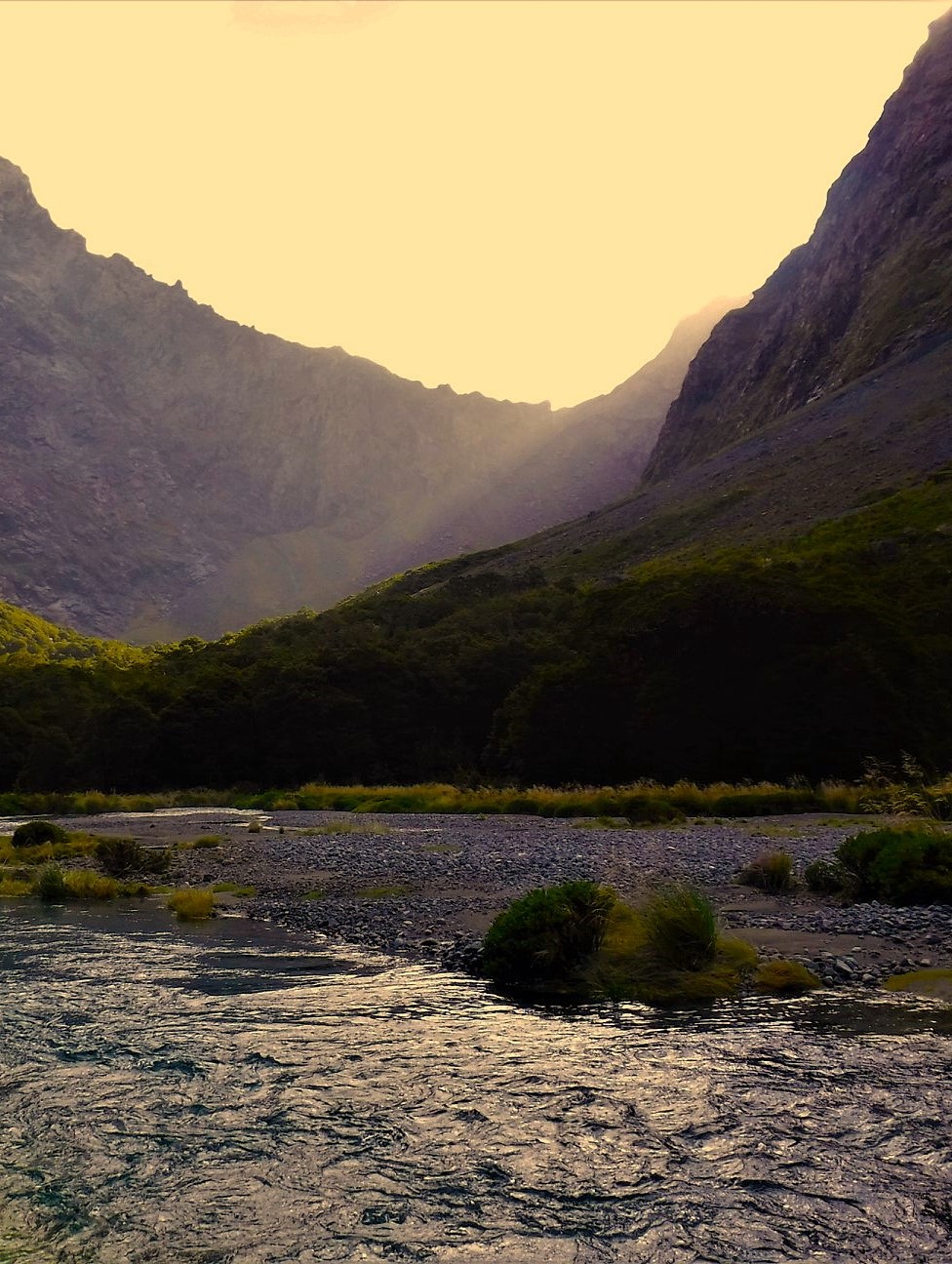“On a Mish” #70 Awe Aspiring (Part Two). Rock of Ages Bivouac. Mt Aspiring National Park. 16.3.2015. I always get excited about going to sleep when I am in the mountains. For some reason even if I don’t sleep that much during the night, I always seem to feel much more refreshed in the morning than when I am in my own bed at home. There is something about the cool alpine air, mixed with the satisfied feeling of achievement that always puts a smile on my face. Whether it be a hut, tent or bivouac, I’d take it over a normal sleeping situation any day of the week!
Scattered amongst New Zealand’s tales of the past are stories of discovering natural accommodation while on adventures in the mountains. These locations have then become part of maps, and then become safe havens for hikers and climbers. Just like the challenge of ‘hut bagging’, bivouac bagging is also a great experience on offer in New Zealand’s backcountry.
The ‘Rock of Ages’ bivouac is a large, open over-hanging rock which at first glance doesn’t look sheltered or dry, but on closer inspection you can see how protected and dry the area under the rock actually is. The sleeping area is still quite exposed, and yet it remains dry in most weather. The one thing the bivouac doesn’t have is any protection from the hungry sandflies. It is bloody lucky they go away at night!
I dropped my gear at the bivvy / my home for the night, and then began to marvel at the awesome location I had got myself to. The area felt like one thick with past experiences from other adventures, and I was very excited about retreating to my sleeping bag later that evening and sleeping in the openness of the rock bivvy.
As it was mid afternoon I was still craving for more exploring, so I dropped off most of my gear at the bivouac and headed up the valley towards the massive multi leaps of Turnbull Thomson Falls. Glaciers have carved the head of the valley into three spectacular cirques, each containing a leap from the falls. From near the base of the waterfall I could see the overhanging lip of the Bonar Glacier about 1500 meters above the valley floor. The sheer cliff below Popes Nose(2700m) is one of New Zealand’s greatest mountaineering challenges, and from Aspiring Flats the rock face looks daunting.
After soaking in the dramatic atmosphere I made my way back to the bivvy and settled in for the evening. I had an excellent meal under the stars and enjoyed sleeping in the open air listening to the local possums having a battle in the trees nearby.
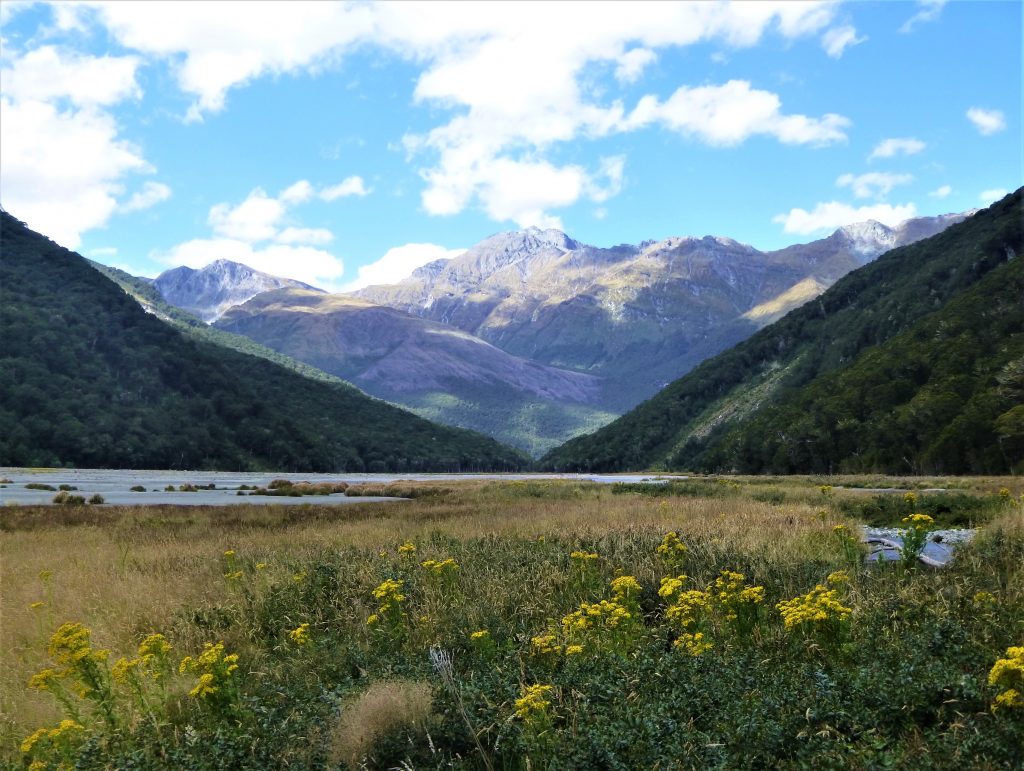
The next day I woke to sandflies biting the only exposed skin I had, my face!
An early-ish start had me out of the warmth of my sleeping bag and brewing up a kick-start coffee to clear the cobwebs. All you can do is smile when waking up in such a place, early mornings in the mountains are hard to beat.
After breakfast I reluctantly packed up my gear and made my way towards the Kitchener River and back on the track, retracing my footsteps from the previous day. This day was a big change from the one before, with dark clouds starting to roll over the mountains from the west. It was obvious that rain was going to return to the area so I picked up my pace on the return journey back down the East Matukituki River to my car at Cameron Flat.
Just before Cameron Flat I came across a school camp, and with the first spits of rain starting to fall boy did the kids look excited about their camping trip! The rain began to settle in while I was having a yarn with one of the instructors and he told me it wasn’t going anywhere for at least the next couple of days (their entire trip!). I had the option of getting out of the rain so I left them to it and continued my hike back to my car, and the end of my epic adventure in the inspiring East Matukituki Valley.
